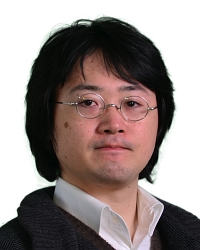TR2022-138
Smart Actuation for End-Edge Industrial Control Systems
-
- , "Smart Actuation for End-Edge Industrial Control Systems", IEEE Transactions on Automation Science and Engineering, DOI: 10.1109/TASE.2022.3216217, October 2022.BibTeX TR2022-138 PDF
- @article{Ma2022oct,
- author = {Ma, Yehan and Wang, Yebin and {Di Cairano}, Stefano and Koike-Akino, Toshiaki and Guo, Jianlin and Orlik, Philip V. and Guan, Xinping and Lu, Chenyang},
- title = {{Smart Actuation for End-Edge Industrial Control Systems}},
- journal = {IEEE Transactions on Automation Science and Engineering},
- year = 2022,
- month = oct,
- doi = {10.1109/TASE.2022.3216217},
- url = {https://www.merl.com/publications/TR2022-138}
- }
- , "Smart Actuation for End-Edge Industrial Control Systems", IEEE Transactions on Automation Science and Engineering, DOI: 10.1109/TASE.2022.3216217, October 2022.
-
MERL Contacts:
-
Research Areas:
Abstract:
Along with the fourth industrial revolution, industrial automation systems are evolving into a multi-tier end-edge computing architecture. Edge controllers, which are equipped with a larger computing capacity compared to local controllers, can communicate with local plants over mainstream wireless networks such as WirelessHART, Wi-Fi, and cellular networks. Well-known challenges induced by networks, such as uncertain time delays and packet drops, have been intensively investigated from various perspectives: control synthesis, network design, or control and network co-design. The status quo is that the industry remains hesitant to close the loop between the edge controller and the actuation side due to safety concerns. This work offers an alternative perspective to address the safety concern, by exploiting the design freedom of an end-edge computing architecture. Specifically, we present a smart actuation framework, which deploys (1) an edge controller, which communicates with physical plant via wireless network, accounting for optimality, adaptation, and constraints by conducting computationally expensive operations; (2) a smart actuator, which is co-located with the physical plant on the end tier and executes a local control policy, accounting for system safety in the view of network imperfections, (3) the end-edge control co-design strategies and cooperation logic for both performance and stability. For certain classes of plants, semi-globally asymptotic stability of the resulting end-edge control systems is established when the edge controller is the model predictive control (MPC), or policy iteration-based learning control. We also provide an adaptation strategy for the end-edge control systems facing model parameter mismatches when the edge controller employs reinforcement learning. Extensive simulations demonstrate the advantages of the proposed end-edge co-design and cooperation procedures.
Related News & Events
-
AWARD MERL work receives IEEE Transactions on Automation Science and Engineering Best New Application Paper Award from IEEE Robotics and Automation Society Date: May 19, 2025
Awarded to: Yehan Ma, Yebin Wang, Stefano Di Cairano, Toshiaki Koike-Akino, Jianlin Guo, Philip Orlik, Xinping Guan and Chenyang Lu
MERL Contacts: Stefano Di Cairano; Jianlin Guo; Toshiaki Koike-Akino; Philip V. Orlik; Yebin Wang
Research Areas: Communications, Control, Machine LearningBrief- The paper “Smart Actuation for End-Edge Industrial Control Systems”, co-authored by MERL intern Yehan Ma, MERL researchers Yebin Wang, Stefano Di Cairano, Toshiaki Koike-Akino, Jianlin Guo, and Philip Orlik, and academic collaborators Xinping Guan and Chenyang Lu, was recognized as the Best New Application Paper of the IEEE Transactions on Automation Science and Engineering (T-ASE), for "a new industrial automation solution that ensures safety operation through coordinated co-design of edge model predictive control and local actuation".
The award recognizes the best application paper published in T-ASE over the previous calendar year, for the significance of new applications, technical merit, originality, potential impact on the field, and clarity of presentation.
- The paper “Smart Actuation for End-Edge Industrial Control Systems”, co-authored by MERL intern Yehan Ma, MERL researchers Yebin Wang, Stefano Di Cairano, Toshiaki Koike-Akino, Jianlin Guo, and Philip Orlik, and academic collaborators Xinping Guan and Chenyang Lu, was recognized as the Best New Application Paper of the IEEE Transactions on Automation Science and Engineering (T-ASE), for "a new industrial automation solution that ensures safety operation through coordinated co-design of edge model predictive control and local actuation".
-
NEWS Yebin Wang delivered an invited industry talk at the 1st IEEE Industrial Electronics Society Annual On-Line Conference Date: December 9, 2022 - December 11, 2022
MERL Contact: Yebin Wang
Research Areas: Communications, Control, OptimizationBrief- Future factory, in the era of industry 4.0, is characterized by autonomy, digital twin, and mass customization. This talk, titled "Future factory automation and cyber-physical system: an industrial perspective," focuses on tackling the challenges arising from mass customization, for example reconfigurable machine controller and material flow.
Related Publication
- @inproceedings{Ma2018dec,
- author = {Ma, Yehan and Wang, Yebin and {Di Cairano}, Stefano and Koike-Akino, Toshiaki and Guo, Jianlin and Orlik, Philip V. and Lu, Chenyang},
- title = {{A smart actuation architecture for wireless networked control systems}},
- booktitle = {IEEE Conference on Decision and Control (CDC)},
- year = 2018,
- month = dec,
- doi = {10.1109/CDC.2018.8619831},
- url = {https://www.merl.com/publications/TR2018-177}
- }




